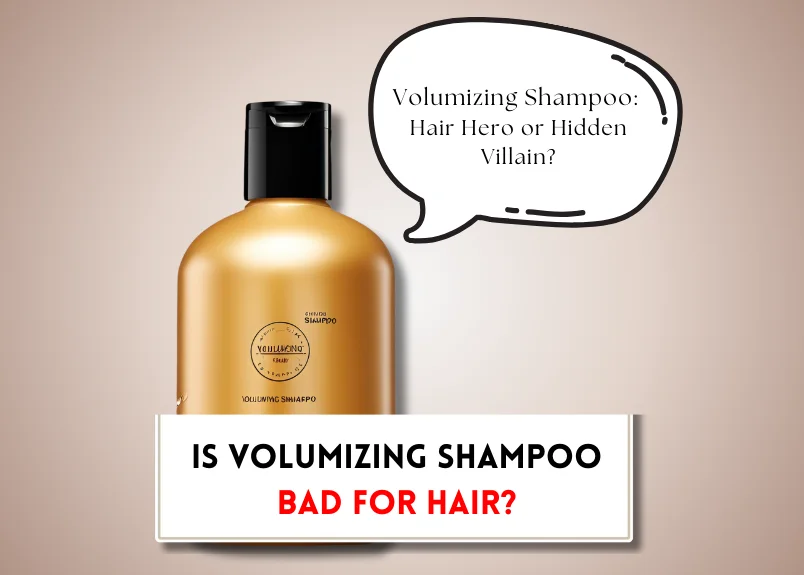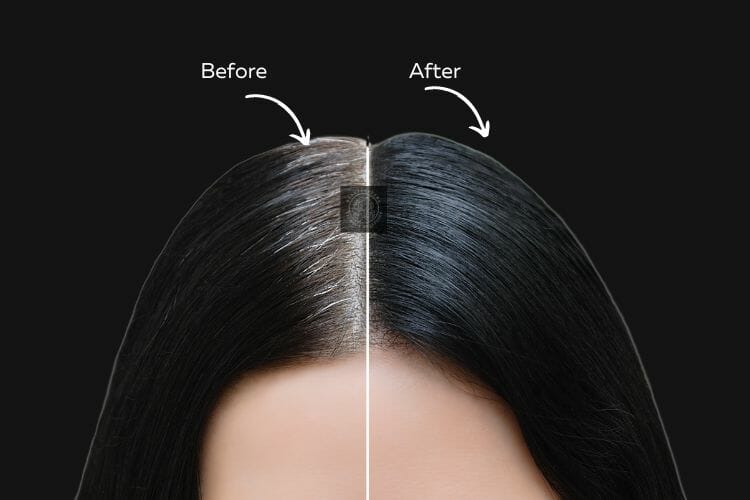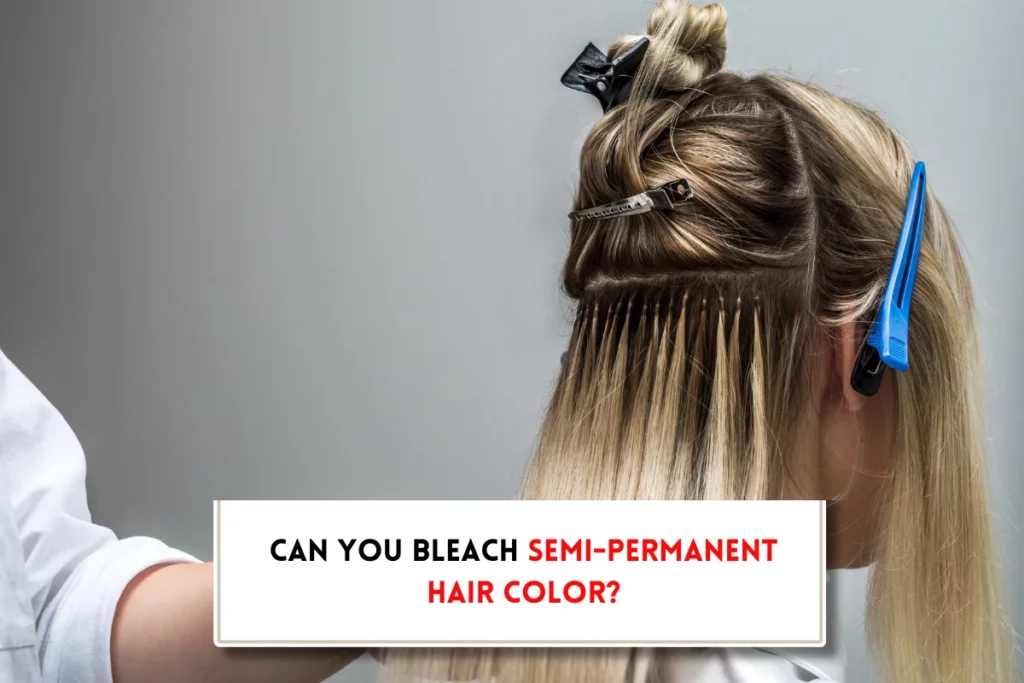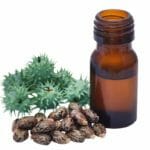Solve the conundrum: How to get coconut oil out of your hair?
At BeautyCaters, our expert team independently curates every recommended product. Purchases through our links may earn us a commission. Explore our transparent selection process.
Coconut oil is a popular hair treatment, but removing it can be a challenge. Whether you’ve overdone it or simply want to switch up your routine, this guide will help you how to get coconut oil out of your hair in the most effective way without stripping your hair. Discover the best methods and tips to restore your hair’s natural balance
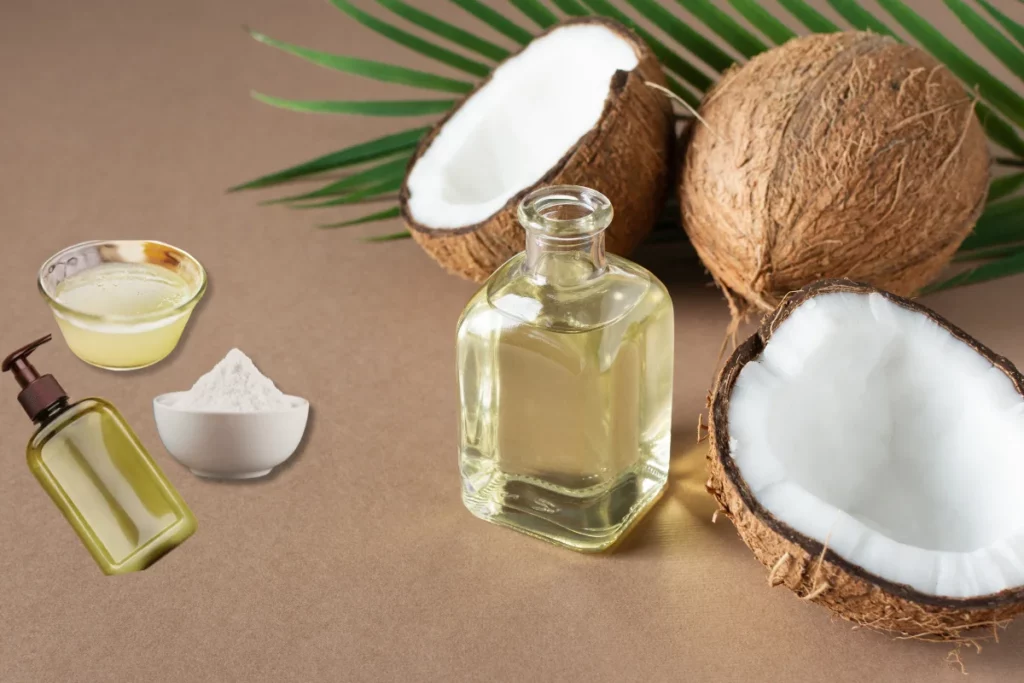
Why do you need to rinse coconut oil out of hair?
While coconut oil has gained popularity as a natural hair conditioner, leaving it in for extended periods can be detrimental to your scalp and hair health. Coconut oil is classified as highly comedogenic, meaning it has a tendency to clog pores. When left on the scalp for too long, it can block hair follicles, leading to a buildup that inhibits hair growth and contributes to scalp issues like dandruff and acne.
Furthermore, excessive coconut oil residue can leave your hair looking greasy and limp, devoid of its natural volume and bounce. To maintain optimal hair health, it’s crucial to remove all traces of coconut oil after using it as a treatment.
Also Read: Does amla oil darken hair?
How to get coconut oil out of hair?
Rinse with a clarifying shampoo
When it comes to removing stubborn coconut oil residue, a clarifying shampoo is your best bet. Formulated to deep clean the scalp and hair, it effectively cuts through product buildup and excess oil.
How to use clarifying shampoo:
- Apply: Dispense a small amount of clarifying shampoo onto your palms and massage into your wet scalp and hair.
- Lather and rinse: Create a rich lather and work the shampoo through your hair. Let it sit for a few minutes before rinsing thoroughly.
Note: Overuse of clarifying shampoo can strip your hair of natural oils. Limit its use to once a week to maintain your hair’s health and balance.
Exfoliate with a scalp scrub
To combat stubborn coconut oil residue and prevent buildup, incorporate a scalp scrub into your hair care routine. This exfoliation removes dead skin cells and product buildup, unclogs hair follicles, and stimulates blood circulation, creating a healthier environment for your hair to thrive, reducing the likelihood of coconut oil buildup and other scalp issues.
How to use a scalp scrub
- Wet hair: Ensure your hair is thoroughly wet before applying the scalp scrub.
- Massage scalp: Gently massage the scrub into your scalp using circular motions. Cover your entire scalp.
- Rinse thoroughly: Remove all traces of the scrub by rinsing your hair completely.
- Shampoo: Cleanse your hair with your regular shampoo, focusing on the scalp.
- Condition: Apply conditioner, paying extra attention to your hair ends. Choose a product with anti-dandruff properties for optimal results.
Use the double shampoo method

If you find yourself without a clarifying shampoo after an oil treatment, don’t panic. Double shampooing can effectively remove coconut oil residue.
How to double shampoo:
- First wash: Apply a small amount of shampoo, focusing on the scalp. Gently massage to create a lather. Allow it to sit for a few minutes to dissolve oil and buildup before rinsing thoroughly.
- Second wash: Repeat the shampooing process, paying extra attention to areas where oil is concentrated.
- Condition: After the second wash, apply conditioner to restore moisture, as double shampooing can dry out your hair.
Remember, while double shampooing is effective, using a clarifying shampoo is often more efficient for removing stubborn oil buildup.
Conditioner to wash out hair oil
While not the most effective method, conditioner can be used to help remove some coconut oil buildup from your hair.
How to use conditioner as a rinse-out:
- Generous application: Apply a substantial amount of conditioner to your hair, ensuring complete coverage.
- Wait and rinse: Let the conditioner sit for a few minutes before rinsing thoroughly.
- Shampoo and condition: Follow up with your regular shampoo and conditioner routine.
Note: Conditioner is primarily designed to moisturize, not cleanse. For stubborn coconut oil residue, a clarifying shampoo or double shampooing is recommended.
Lemon juice rinse for coconut oil removal
Harnessing the power of nature, a lemon juice rinse can be a surprising ally in the battle against stubborn coconut oil residue. The acidic properties of lemon juice help to break down oil, leaving your hair refreshed and revitalized.
How to use a lemon juice rinse:
- Mix solution: Combine the juice of two lemons with eight ounces of water. Optionally, add a few tablespoons of honey for added moisture.
- Apply to hair: Pour the mixture over your wet hair and scalp, massaging gently.
- Rinse thoroughly: Allow the mixture to sit for a few minutes before rinsing with warm water.
Caution: lemon juice can lighten hair. use with caution, especially on colored or chemically treated hair.
Make a baking soda scrub
Baking soda offers a natural and cost-effective solution for tackling stubborn coconut oil buildup on your scalp. Its alkaline properties help to neutralize the oils, while its gentle abrasive texture aids in exfoliation.
How to use:
- Create a paste: Mix baking soda with water to form a thick paste.
- Target oily areas: Apply the paste directly to your oily scalp, focusing on the crown and any other greasy spots.
- Rinse thoroughly: Remove the paste with warm water.
Note: Avoid applying the baking soda paste to the lengths of your hair as it can be drying.
An egg wash

While primarily used in culinary applications, an egg wash can also be a surprising ally in your battle against coconut oil buildup. Eggs contain natural cleansing properties that can help break down oil and grease.
How to use an egg wash:
- Create the mixture: Beat two to three eggs in a bowl and mix with water to create an egg wash.
- Apply to hair: Generously apply the egg wash to dry hair, massaging it into your scalp and hair strands.
- Rinse thoroughly: Allow the egg wash to sit for about 5-10 minutes before rinsing with cool water. Avoid hot water as it may cook the egg in your hair.
Note: An egg wash on your hair can be messy, so it’s advisable to perform this treatment in a shower or bathtub. Additionally, while eggs can help remove oil, they may not be as effective as commercial clarifying shampoos for stubborn buildup.
Use dry shampoo
Dry shampoo is a convenient product designed to absorb excess oil and refresh your hair between washes. While it can effectively mask the appearance of greasy hair, it’s essential to understand its limitations
How to apply dry shampoo
- Section hair: Divide hair into sections for even application.
- Spray roots: Hold can 6-8 inches from scalp and spray at roots.
- Massage scalp: Gently rub dry shampoo into scalp with fingertips.
- Let it sit: Allow a few minutes for product to absorb oil.
- Brush hair: Remove excess powder and distribute product evenly.
Final Word: How to get coconut oil out of your hair?
While coconut oil can work wonders for your hair when used correctly, removing it can be a challenge. With the right techniques and products, you can successfully eliminate coconut oil buildup and restore your hair’s natural balance. Remember, consistency is key. If one method doesn’t work perfectly, don’t be discouraged. With a little patience and experimentation, you’ll find the solution that best suits your hair type and needs.




